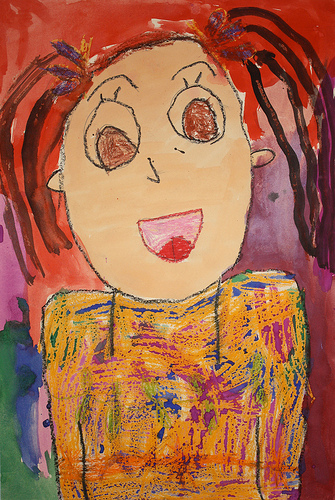Anyone who can remember sitting in their elementary school classes probably instinctively knows that teaching young learners is not the same as teaching adults. Children have shorter attention spans, they tend to be far more kinesthetic learners and they may need help tying their shoes.
Greystone College’s TKT Young Learners course is an intensive class designed to teach future and current teachers how to address young learners’ needs and also to help them be successful on the Cambridge TKT YL exam. This is done in class through a mix of theory and hands-on activities and also through a practicum at a school where our teachers in training get a chance to practice the theory they’re learning.
Class
To begin, our teachers in training learn the typical characteristics of young learners in different age groups. Unlike adults, children often  need to be taught not just content but how to learn. Our teachers in training learn effective strategies to facilitate this and to enhance young learners’ communication skills.
need to be taught not just content but how to learn. Our teachers in training learn effective strategies to facilitate this and to enhance young learners’ communication skills.
In class, teachers in training learn the elements of a strong lesson plan and how to tailor these to the needs of a specific age group, for example by using familiar nursery rhymes to teach a grammar point or a game of Simon Says to practice vocabulary related to body parts. They learn how to organize lessons so that each one builds on previous lessons and towards future ones.
Teachers in training get exposure to a variety of activities and resources suitable for engaging students, doing a controlled study of the target language and doing freer study of target language. They learn classroom management techniques and ways to create a good classroom atmosphere. Finally, teachers in training learn suitable methods for assessing young learners.
At the end of the program, teachers in training submit a final project: a unit plan complete with all the necessary materials and daily lesson plans. This is a chance for them to put theory into practice.
Each day starts with one teacher in training leading an in class activity. This gives the teachers in training lots of practice giving clear and simple instructions and using age-appropriate vocabulary.
As well as practising and micro-teaching with their peers, teachers in training do sample questions from the TKT YL exam. This gives them a chance to familiarize themselves with the type of questions they will see on the exam, to develop test-taking strategies and to see which areas they may need to study further.
Practicum
While the teachers in training get many chances to practice on each other in class, nothing quite compares to the experience they gain from setting foot in a classroom populated by actual young learners. For one week of the course, usually the third, teachers in training get the chance to be teachers’ assistants in elementary schools, high schools, preschools or daycares.
Exactly what the teachers in training do there will depend on the needs of the practicum placement and of course the teacher in training’s comfort level. As the principal of one of our practicum placement schools, Danielle Leonardi of CEFA North Vancouver, said, “The practicum students are able to jump into our curriculum for a period of one week and have the chance to contribute as much as they are comfortable with. They experience what it is like to observe and help run an active classroom with a daily, routine schedule of activities. Overall, they help the teachers create the joyful environment of discovery that the children look forward to learning in each day.”
Practicum students also get a chance to see different types of curriculum and how teaching philosophies affect these. For example, as Leonardi says, at CEFA they “aim to teach to the whole child and [the] program has elements of both Montessori and Reggio Emilia, but also focuses on the core subjects of Mathematics, Reading, Writing, and Science. In addition, [they] enjoy co-curriculars such as: Yoga, Drama, Dance, Spanish, Culture Immersion, etc.”
Leonardi explains that the teachers at CEFA have specific learning objectives they aim to meet each month, but they have a lot of freedom in how to teach them. For example, educators can create their own games and activities to meet these objectives. Practicum students are welcome to suggest their own, lead a pre-planned one, or simply observe and help with classroom management.
In whatever way our practicum students contribute, their presence is appreciated. Leonardi says “Greystone College students have been a wonderful addition to our school over the past several months.” More importantly, the experience is incredibly rewarding for our teachers in training. Practicum students add a variety of tools to their tool belt, observe and practise the theory they’ve been learning and finish with a huge sense of accomplishment and a smile on their faces.
Drawing photo credit: Geoffery Kehrig via photopin
Dream a better world photo credit: Geoffery Kehrig via photopin

